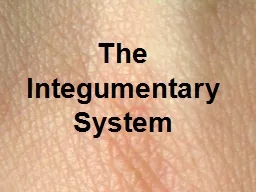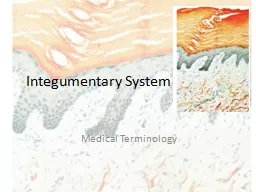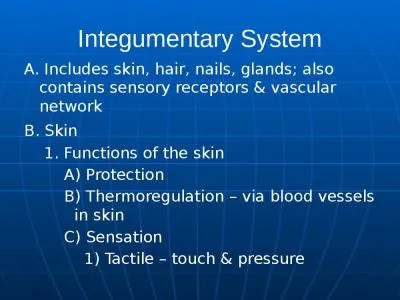PPT-Integumentary System Three main layers of tissue make up the skin
Author : sherrill-nordquist | Published Date : 2018-12-05
Epidermis Dermis Hypodermis Epidermis The Outermost layer of skin Avascular Complete regeneration approximately 35 days Dermis Also called corium or true skin Contains
Presentation Embed Code
Download Presentation
Download Presentation The PPT/PDF document "Integumentary System Three main layers o..." is the property of its rightful owner. Permission is granted to download and print the materials on this website for personal, non-commercial use only, and to display it on your personal computer provided you do not modify the materials and that you retain all copyright notices contained in the materials. By downloading content from our website, you accept the terms of this agreement.
Integumentary System Three main layers of tissue make up the skin: Transcript
Download Rules Of Document
"Integumentary System Three main layers of tissue make up the skin"The content belongs to its owner. You may download and print it for personal use, without modification, and keep all copyright notices. By downloading, you agree to these terms.
Related Documents














